What does rosemary look like and how to care for it?
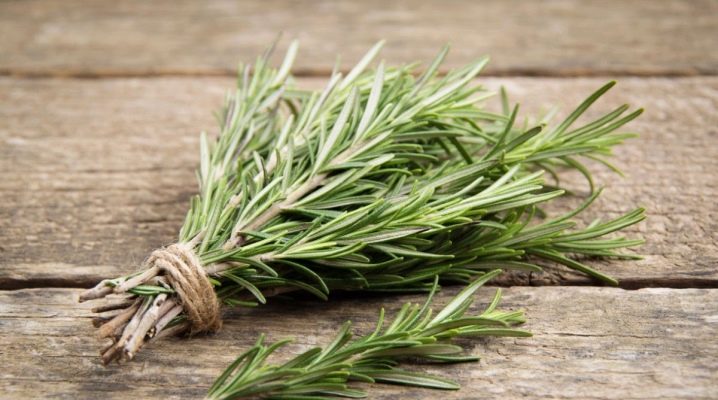
Rosemary is the very colorful seasoning that often appears in culinary photos and videos. Its graceful twigs are placed on the meat, and the latter is impregnated with the aroma of the plant. And usually they buy rosemary, but you can grow it yourself.

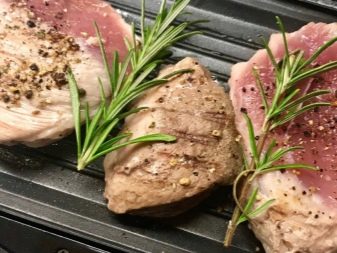
general description
This evergreen plant is abundant in Italy, Spain and France - countries where people know a lot about good taste. In Russia, in the middle lane, and even more so in the northern regions, growing rosemary to the level of a bush is a problem. But the modest option is also acceptable, but it is not necessary to look for a place for him on the site: room conditions are quite suitable. Therefore, rosemary grows on the windowsill, and this is enough for small culinary inquiries.
Let's take a closer look at the characteristics of the culture:
- evergreen perennial shrub belonging to the family of lamines;
- differs in fragrant narrow leaves, which are green on top, and white on the bottom and very much resemble coniferous needles;
- his flowers are small, blue-purple;
- can be planted on a site in a group, or can be formed in a mixborder;
- in southern countries, it can be used as a green fence, in the same way they decorate walls and fences on the south side;
- the plant is spicy, thermophilic, its winter hardiness is low.
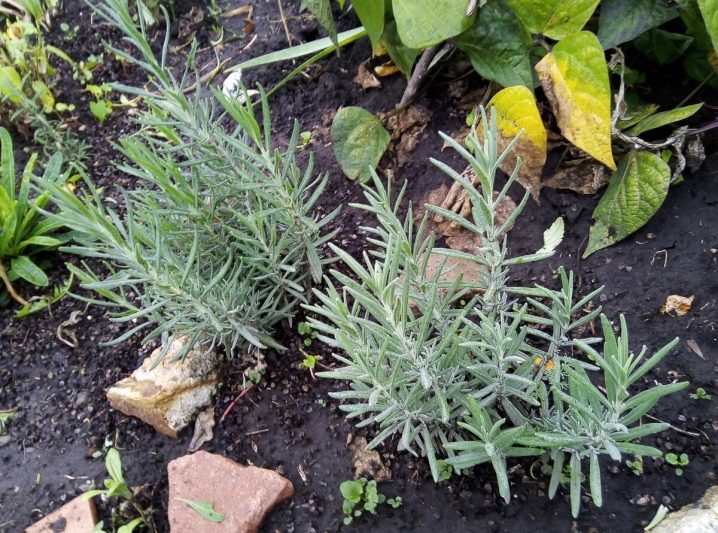
The Latin name of the plant is translated as "sea freshness", since in ancient times it was associated with Aphrodite, but there is still no iodine sea scent in it - but there is a combination of recognizable camphor and pine (the Greek name translated as "balsamic bush" is much closer to the truth). Ancient Greek students, by the way, wore rosemary wreaths on their heads, because the plant was believed to improve memory. But the real reason for the popularity of the bush was its aroma. It smells slightly of pine needles, you can also catch notes of lemon and mint in it.
The shrub can grow up to 50 cm, but in a suitable climate it can grow under 2 m. He has a rather powerful root system, which is 3 or even 4 m capable of penetrating the soil. On the surface of young shoots, pubescence is noticeable. The leaves reach 0.4 cm in width and 3.5 cm in length. Their front surface is distinguished by their glossiness, while the reverse side is pubescent. Rosemary is related to lavender, basil, mint, hyssop, thyme, lemon balm and oregano.
It is customary to use the tops of annual shoots fresh: rosemary is ideal for meat dishes, eggplant, legumes, cabbage.
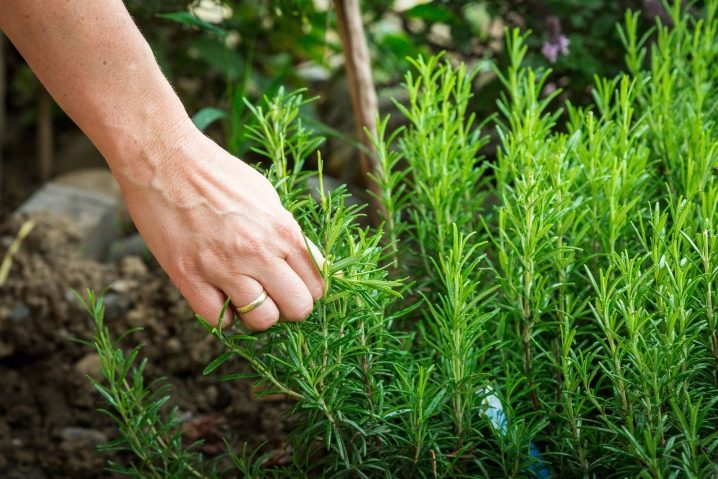
Types and varieties
In indoor floriculture, as well as in gardening practice, two types of plants are traditionally used - medicinal (ordinary) and prostrate. And the first is more popular.
The main thing about medicinal rosemary:
- erect bushes, grow on the street and at home in pots;
- leaves and shoots are valuable;
- rosemary essential oil is considered a good tonic;
- used in the garden as a decorative element;
- thanks to the aroma of the plant, beneficial insects fly to the site.
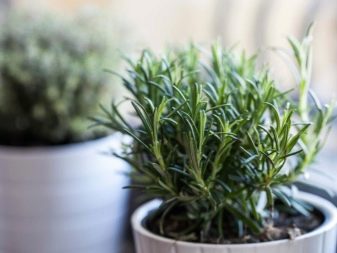
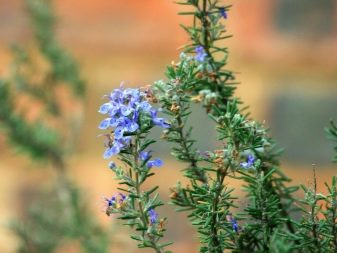
Spread rosemary is more commonly found in the southern regions. It has a spherical crown. The leaves of this species are needle-like, can be light green in spring, and change color to bluish in autumn.
Which varieties of rosemary are popular:
- "Rosinka" is a medicinal plant that becomes ripe 1.5 months after germination;
- "Richard" - grows well even in dry conditions, but at normal room temperature it feels much more confident;
- "Tenderness" is almost an ideal variety for growing in pots, the flowering is very beautiful, because the flowers are expressively blue;
- "Ampelny" - the variety is classified as decorative, a rather capricious, albeit very beautiful plant;
- "Crimean" - this shrub blooms in February, and now its aroma is really close to the sea one;
- "White" - it has delicate white inflorescences, such a plant in the garden will look very beautiful, and at the same time it is medicinal;
- "Biryusa" is a very beautiful variety, for the garden and at home it will be an exquisite decor, resistant to drought, it is better to grow in a tub to bring it into the house in winter.
If you grow rosemary at home, a pleasant pine smell will be felt in the space.

Landing
Before sowing seed, it must be kept in water for several hours. Swollen seeds are sown in moistened sand (vermiculite can also be taken), the depth should not exceed 0.4 cm. From above, the container with seedlings must be covered with a film. If you want to speed up the germination of seeds, you need to keep the crops warm, the temperature range is 25-30 degrees. The shelter needs to be cleaned from time to time, moistening the ground with a spray bottle, it should remain a little damp. And if everything is done correctly, the seedlings will appear in 6-8 weeks. And as soon as it appears, the crops are rearranged in a place with good lighting.
It is necessary to water the substrate in the container regularly; for this, settled water is used. You can plant seedlings in open ground when their height is at least 70 mm.

But what you need to know about planting rosemary at home.
- The preliminary stage (that is, growing seedlings) is described above. As soon as it has reached 70-80 mm, the rosemary will have to dive into different pots. It is better to take clay containers up to 10 cm in diameter. There should be drainage holes at the bottom.
- The container is certainly filled with the substrate., which passes water and air well, and in order to make it, it is necessary to combine a universal soil with sand or vermiculite. You can also mix humus, sand, sod and deciduous soil. Everything except the sand is taken in two parts, the sand must be taken in one part.
- You need to make a small hole in wet soil, and the depth of this hole should be equal to the height of the root of the seedling. The plant must be taken out of the container as carefully as possible, and it must be taken with an earthen lump. And then this "kit" is planted in the prepared hole in the pot. Near the seedling, you need to tamp the soil a little.
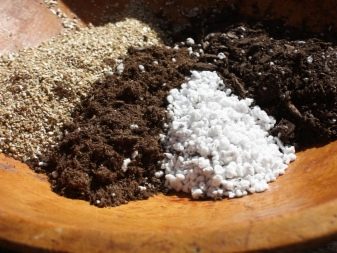

Growing care
Taking care of the plant is easy. Caring for homemade rosemary will be slightly different from what grows outside, in a vegetable garden or garden.
At home
The spicy plant cannot be called particularly demanding, but it will not hurt to go over all the points on the sheet of taking care of it. How to create a good setting for homemade rosemary:
- the optimal home temperature is 20-25 degrees, in winter it will be better for him where the temperature is not higher than 15 (on a glassed-in balcony, for example, on a veranda);
- in order for rosemary to bloom perfectly, in winter it needs coolness, and if there is little flowering, it probably spends the whole year on the windowsill;
- so that the plant is more active in the formation of leaves, in winter it is placed on the southern, eastern or western windowsill;
- in winter, indoor greenery is difficult without additional lighting, therefore phytolamps are very helpful - however, full-spectrum LEDs are also suitable (they are cheaper than phytolamps);
- It is better to turn the pot towards the light, first with one side, then with the other;
- in summer, a pot or container with a plant can be taken to the balcony, taken out into the street (put on the porch in the country, for example), or you can even plant overgrown rosemary on the site.
It is a mistake to think that the plant will be short. It is quite capable of growing at home up to half a meter in height.But still, its average height is considered to be 60 cm, which is quite a healthy indicator for homemade rosemary.
To control and correct the splendor of the plant, the excess leaves in spring and autumn must be cut off.
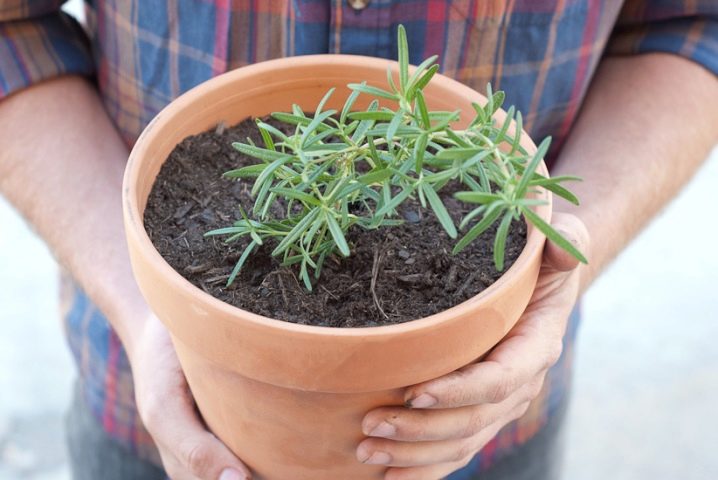
In the open field
If it happens in the northern region (for example, even in the Leningrad region or in the Urals), in the summer rosemary should be grown in the open field, and in the winter - at home in a pot. Even in such regions, in summer, the plant is better in the ground, where it grows well, looks more powerful. In the fall, the growth of new shoots stops, the flower is cut off and, together with an earthen lump, is transplanted into a large container.
The nuances of care when cultivating in the open field:
- the plant will be better in a sunny area;
- for active growth, the culture needs regular watering, but there should not be overflow, rosemary is intolerant of wet soils;
- it will be fine in a loose nutritious soil with excellent aeration (in nature, it grows on sandstones and gravelly soils);
- bushes need to be formed - of course, if there is a desire to make them decorative, and more often form them in the first half of spring, before the start of rapid growth;
- for rejuvenation, rosemary is pruned every 7 or 8 years.
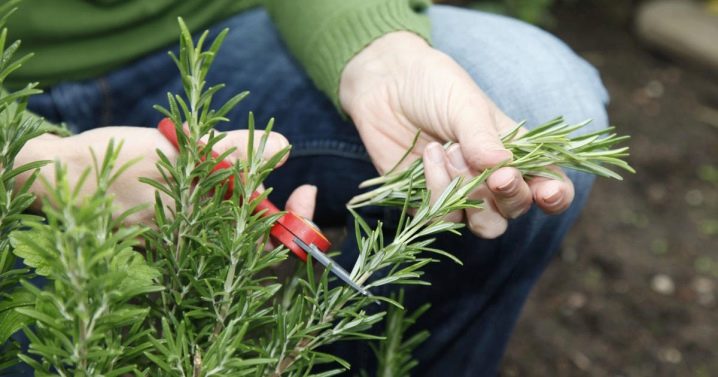
In summer, young shoots of crops growing in the open field can and should be cut off, because this is an excellent fresh seasoning. You can also make autumn harvesting of greenery. When a flower is to be transplanted into a pot, shoots and roots need to be cut significantly.
As for fertilizers, they are needed only by the rosemary that hibernates outside. These are organic or mineral fertilizers based on nitrogen or phosphorus. And once a month it will be enough to feed the culture. A plant grown in a container can be regularly fed with compound fertilizer.
The wintering of the culture in a mild climate is going well, but if there are frosts down to minus 10, the plant needs to organize a shelter.
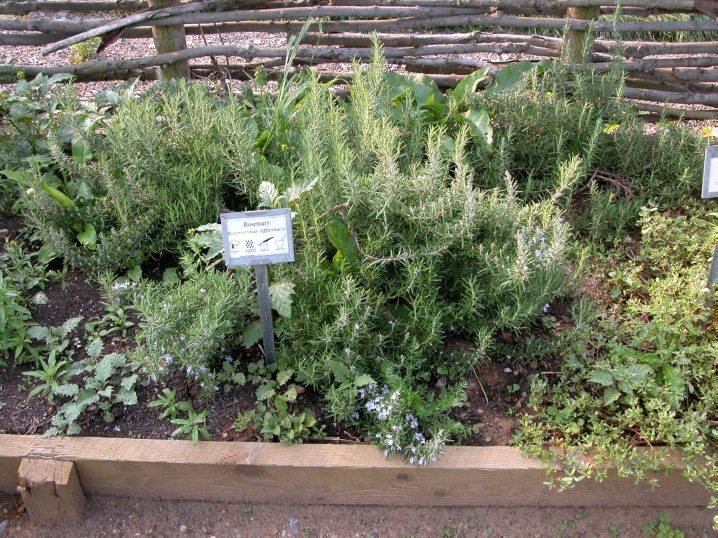
Reproduction
This culture can be propagated in four ways - by layering, seeds, dividing the bush and cuttings. It is not difficult to engage in cuttings: the bush was cut off (in spring or summer), then rooted in loose earth under a film. Each stalk is about 10 cm. The lower tips of the stalk sink obliquely into the ground. There should be a minimum of 10 cm between them. The rooting prognosis is usually good.
As for seeds, they can be bought and sown at the junction of winter and spring. It is convenient to sow them in plastic containers with lids. Airing the seedlings is necessary; it is not necessary to close the containers tightly. It should be understood that seedlings will most likely appear unevenly. When most of the seeds have sprouted, the cap should be removed. And in a month it's time to plant young greens. After the end of the frost, you can send the seedlings into the open ground.
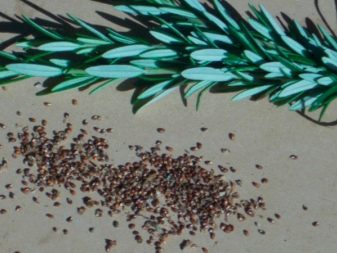
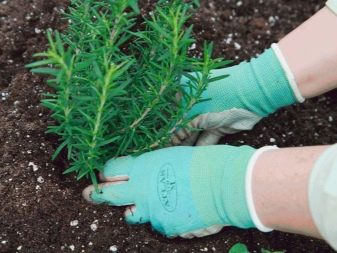
For propagation by layering, it is necessary to select those shoots on the bush that grow close to the ground. They are bent to it, fixed and instilled so that the stem tip remains above the surface. Layers need regular watering, and it is good when the earth is humid around them.
As soon as the top begins to grow, the cuttings can be separated from the mother bush and planted separately.
Dividing the bush is even easier: the bush is dug up and its root is divided into parts. Each section should have roots and stems. And the places of the cuts must be sprinkled with coal powder, after which the cuttings should be distributed in separate containers.
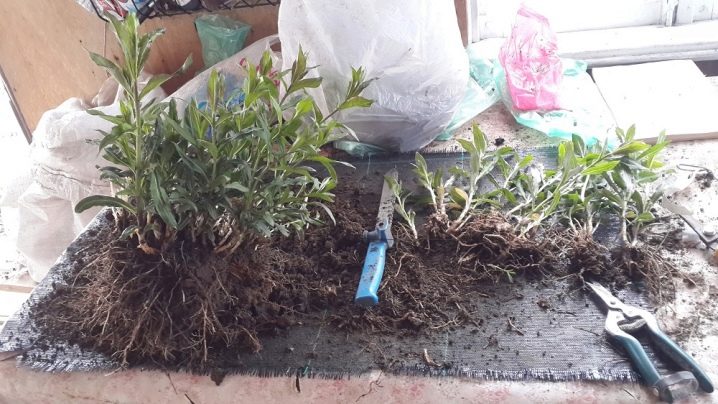
Diseases and pests
Rosemary is considered a fairly hardy plant. But sometimes it is attacked by downy mildew, aphids and whiteflies also like to occupy a spicy plant. A soapy solution that is sprayed on bushes will help get rid of pests.
And so that the house plant is not struck by downy mildew, you need to monitor the humidity indicators in the room (they should not be high), as well as the substrate humidity. If a disease occurs, for example, "Fitosporin" for flowers will help.
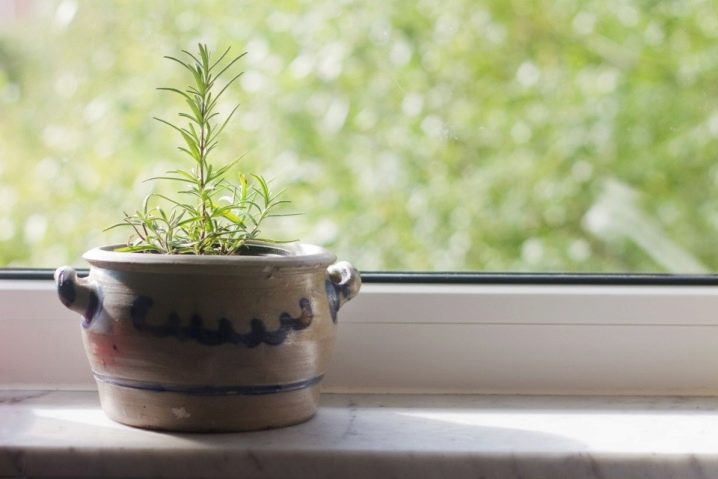







The comment was sent successfully.